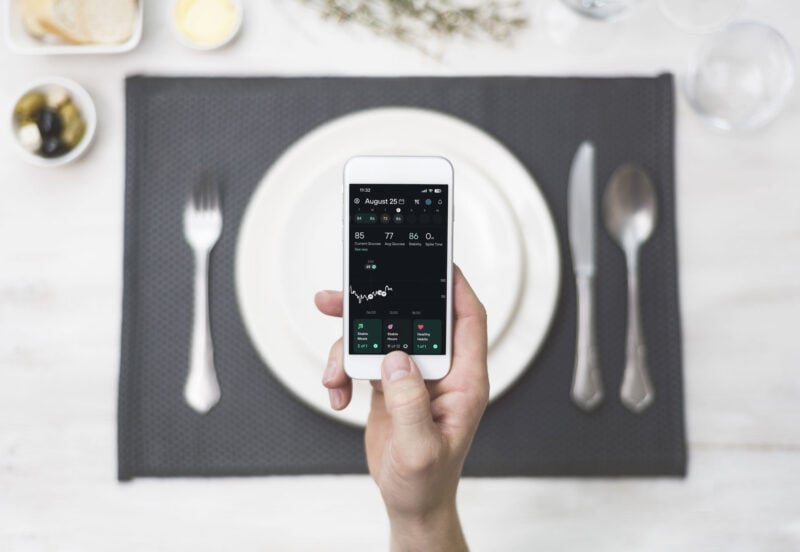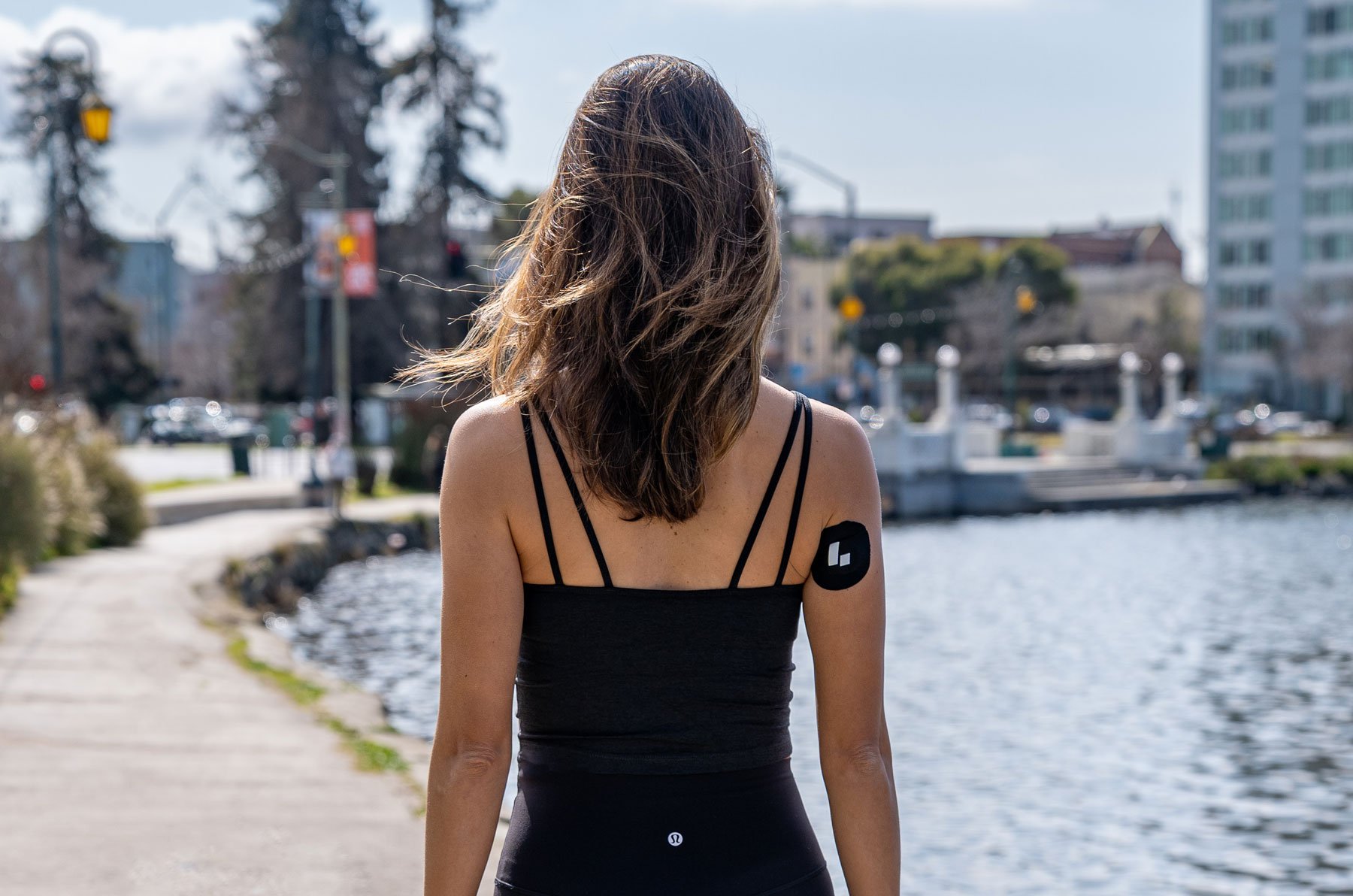Your blood glucose level rises typically and falls throughout the day. But how much it increases and falls is crucial to your metabolic health. We expect small changes, but large swings can have both near and long-term consequences.
When you eat a meal, your body turns carbohydrates into glucose—a simple sugar that powers your cells. That extra glucose in your bloodstream triggers the release of a hormone called insulin, which helps your body use the glucose for fuel or store it for later use.
This cycle of eating and taking in glucose, then burning or storing the excess, causes your blood sugar to rise and fall. Other factors (like sleep and exercise) also influence your blood sugar, but what you eat is the most significant driver of change.
These glucose highs and lows are known as your glycemic variability. The goal for better metabolic health is to keep your glycemic variability looking more like gently rolling hills than tall peaks and deep valleys.
The latter is typically referred to as a blood sugar “spike” and occurs when you consume more glucose (think: sugar, refined carbs) at once than your body can use quickly, so the concentration in your blood rises sharply. This spike is often followed by a “crash” as your body overcompensates for all that glucose with too much insulin, and your blood sugar falls below baseline for a while. (This pattern is most evident if you’re using a continuous glucose monitor to watch your blood sugar levels in real-time, but you may also feel the changes—more on that below.)
Why Do We Care About Blood Sugar Spikes?
Over the long term, high glycemic variability is linked with illnesses like cancer, cardiovascular disease, dementia, and increased mortality risk. High glycemic variability can damage cells and lead to cascading metabolic dysfunction. This process often begins with insulin resistance.
- Insulin resistance: Chronic high blood sugar leads to elevated insulin levels. Gradually, your cells and tissues may become “numb” to insulin and stop responding to it efficiently. Your body then needs to produce even more insulin, which, in turn, increases insulin resistance. It’s a vicious cycle that can ultimately lead to Type 2 diabetes (associated with advanced insulin resistance) and contribute to other conditions, such as heart disease, infertility, Alzheimer’s disease, and more.
- Vascular dysfunction: Blood sugar spikes can negatively affect blood vessels in different ways. The lining and the surrounding muscles begin to malfunction, leading to problems in blood flow and blood pressure. Over time, this can lead to heart disease, stroke, and other vascular diseases.
- Oxidative stress and inflammation: Elevated blood sugar also triggers the creation of inflammatory compounds (such as cytokines and C-reactive protein) and reactive oxygen species—volatile molecules that can damage your DNA. These phenomena can damage our cellular health and lead to serious disease.
- Cognitive dysfunction: High glycemic variability has been linked to dementia among people with diabetes. But, even in people without diabetes, glycemic variability is associated with cognitive decline among older adults and poorer memory in young people. The mechanisms behind this effect are not entirely understood, but we know that the brain is sensitive to glucose levels. High glycemic variability may cause damage to the fine network of blood vessels that nourish the brain or to the brain tissue itself.
Of course, a single blood sugar spike doesn’t cause these conditions, nor does a single day of high stress or poor sleep. Instead, these are long-term risk factors that threaten your health when repeated over time.
That said, you may feel the effects of even a single spike and crash in the short term:
- Hunger and cravings: A blood sugar spike is often followed by a crash, during which your blood glucose falls lower than before your meal. Your body may interpret this steep drop as a sign that you urgently need food, which manifests as hunger or cravings for more sweets. Giving in to these pangs can result in more spikes and crashes.
- Negative emotions: Research in this area (which has focused mainly on people with Type 2 diabetes) has found that blood sugar spikes can trigger feelings of sadness, low energy, and increased agitation/anxiety. For example, a small study in women with Type 2 diabetes suggests that people with more glycemic variability also seem to have more negative moods, like depression, anxiety, and anger.
- Disrupted biological rhythms: Research has found that carb-heavy meals can alter important aspects of your circadian rhythms, such as your body temperature and heart rate. These changes may explain, in part, why people with Type 2 diabetes often have worse sleep.
 Get a real-time view on your blood sugar changes
Get a real-time view on your blood sugar changes
Levels, the health tech company behind this blog, can help you see how your blood sugar moves in response to diet and lifestyle. Get access to the most advanced continuous glucose monitors (CGM), along with an app that offers personalized guidance so you can build healthy, sustainable habits. Click here to learn more about Levels.
How to Recognize a Blood Sugar Spike
So what exactly counts as a “spike”? Given that blood sugar typically rises after a meal, when exactly does that increase become a problem? When does a “hill” become a concerning “mountain”?
The first thing to understand is that science doesn’t have a consensus on this issue. The terms we’re using (e.g., “hill,” “mountain,” and “blood sugar spike”) are conceptually helpful, but they have no precise clinical meaning. This gap in our understanding partly stems from glycemic research historically being limited to snapshot-style blood sugar tests that provide a single data point, making tracking glucose over time or analyzing it in detail difficult, especially in people without diabetes. Only recently, with the advent of continuous glucose monitors, have researchers had the rich, high-fidelity data needed to understand better which fluctuations are normal and which are concerning.
(Levels’s large-scale study on glycemic patterns in a general population aims to contribute to this research with the single biggest dataset of glucose trends in people without diabetes. Read more about the study here.)
So, how do we distinguish between hills and mountains? If you’re looking at a glucose curve on a continuous glucose monitor, there are two primary factors to consider.
Height of the glucose curve
Aim for post-meal blood sugar elevation under 30 mg/dL.
How high is the peak relative to the baseline? While some of the other parameters below are subjective, this metric is objective. The International Diabetes Federation says that glucose levels after a meal should stay below 140 mg/dL. A 2007 study concluded that blood glucose tends to peak even lower, at roughly 110 mg/dL, among healthy adults without diabetes. Based on the distribution of these numbers and the normal pre-meal glucose level among healthy people (typically 72-90 mg/dL), Levels recommends that you try to keep your post-meal blood sugar elevation under 30 mg/dL. In other words, if your pre-meal glucose is 80 mg/dL, your post-meal blood sugar level should remain below 110 mg/dL at its highest peak. That’s the line at which a hill starts to become a mountain.
Duration of the glucose curve
Aim for a return to baseline within 2-3 hours of eating.
During conventional diabetes testing, people drink a sugary beverage and take a glucose test—usually one and two hours later. This test measures how well the body’s insulin systems process glucose. A blood glucose level from 140 to 199 mg/dL indicates prediabetes, while 200 mg/dL or higher indicates Type 2 diabetes. People with a normal glucose tolerance should have a glucose level under 140 mg/dL, according to these guidelines. Similarly, the International Diabetes Federation advises that, among people with normal glucose tolerance, blood sugar should return to pre-meal levels two to three hours after eating.
Other components of glucose changes tell us something about our response, though these are less definitive than the height and length.
Area Under the Curve (AUC)
Aim for lower total AUC.
The area under the curve is essentially a measure of the cumulative glucose entering your bloodstream after a meal. AUC helps compare glucose curves of different sizes and shapes, as it boils them down into a single number that reflects their total impact. Using AUC is actually how a food’s glycemic index (GI) is calculated; the greater the AUC, the higher the GI. Lower GI meals are thus more likely to yield “hills” rather than “mountains” in your blood glucose, all other things equal.
But AUC alone can be misleading. A wide, low glucose curve may have the same AUC as a brief, sky-high spike—but the sharp spike may be more detrimental to your health. It’s a bit like measuring total rainfall during a storm: Six inches of rain falling gradually over a day may not be a problem, while the same volume of water condensed into an hour will cause flash flooding. This is why researchers have advocated looking at other dimensions of the curve, such as its width, peak height, and rise time.
Time to peak
Aim for a longer time to peak (at least 30 mins).
A 2009 study found that blood glucose peaked 60 minutes after mealtime in real-world conditions. And a 2022 study found that glucose tended to peak at 30 minutes unless participants engaged in a brisk 30-minute walk—in which case, the blood glucose response was lowered, and the peak was delayed to 60 minutes or later. Together, these studies suggest that the 30- to 60-minute range is normal for blood glucose to peak. A blood glucose peak before 30 minutes indicates that the meal you’ve eaten had a high glycemic load or didn’t contain sufficient fiber, protein, and fat to delay its metabolism.
5 Ways to Reduce Blood Sugar Spikes
1. Aim for whole, low-GI foods. You may know that sweets, white bread, refined grains, and starchy vegetables like potatoes can quickly spike blood sugar. But you may be surprised that other high-GI foods are slipping into your diet, such as coffee creamer, condiments (like sweetened ketchup and salad dressing), and some fruits and vegetables (e.g., beets and grapes).
2. Pair carbs with fat and protein. Blood sugar tends to rise faster when we eat carbohydrate-heavy foods alone. Combining carbs with fat, protein, and fiber can significantly reduce their impact by slowing the rate at which your body absorbs glucose. Eating those other foods first and saving the carbs for last may be more effective.
3. Move after eating. Taking a brisk walk after your meal can help your muscles burn off some of the glucose you just consumed. It may also slow the rate of food passing from your stomach into your lower gut. A 2022 meta-analysis found that just two minutes of walking can significantly affect your glucose response. Can’t go for a walk? Any movement—cleaning, dancing, squats—will help.
4. Get enough sleep. A 2021 study found that sleep quality is deeply tied to blood glucose control, with just one night of poor sleep triggering higher blood sugar the following day. Aim for seven to eight hours a night by maintaining good sleep hygiene: keep your bedroom cool and dark, avoid electronic screens for several hours before bed, follow a consistent bedtime pattern, and only use your bed for sleeping (no phones or TV).
5. Avoid eating late at night. Insulin seems to be secreted in low-level daily pulses attached to your circadian rhythm. So, insulin sensitivity appears to be highest in the morning and lowest in the evening. Therefore, eating larger meals in the morning and early afternoon—when insulin levels are highest and glucose control is strongest—may benefit your metabolic health.









